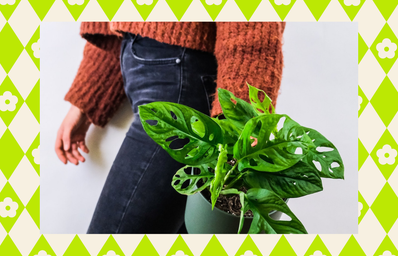Picture this: you should be doing your homework and while you might have your laptop open in front of you, you’re really looking at the Shein app on your phone.
This is a regular occurrence for me. I can’t tell you the number of hours I’ve spent browsing Shein’s website, entranced by the affordable, trendy items on every page. Before I know it, I have a cart full of crop tops, mini dresses and stylish accessories, and my total is only $50.
Shein is a popular online retailer known for its ridiculously low-priced styles. The allure of their clothes is strong, especially for a broke college student like me. I can look cute and on-trend without breaking the bank.
However, Shein is a part of a larger problem known as fast fashion. An article by The World Bank states that fast fashion retailers like Shein are some of the world’s biggest polluters.
“The fashion industry is responsible for 10% of annual global carbon emissions, more than all international flights and maritime shipping combined,” according to The World Bank. “At this pace, the fashion industry’s greenhouse gas emissions will surge more than 50% by 2030.”
This is not to mention the exploitation of textile workers. Most fast fashion companies outsource their production to developing countries with more lenient labor laws. As a result, workers are subject to dismal workplace conditions, low wages and few breaks. Many of these laborers are underage, with an estimated 170 million children participating in child labor around the world.
After learning the truth behind Shein’s deceptively inexpensive clothing, I’ve tried to cut down on my consumption of fast fashion so that I can have a more conscious closet. Below, I’ve listed six methods I’ve used to build a sustainable wardrobe in college.
Thrift Shopping
Before influencers like Emma Chamberlain popularized second-hand shopping, I wasn’t aware of the beauty of thrift stores. I would never have believed that you could find fashionable pieces within those piles of used clothing. Thanks to Chamberlain’s thrift hauls, I’ve seen the light, and I’m now a passionate advocate for thrifting.
Buying used clothes has several benefits, one being that it’s an amazing way to shop sustainably. Through thrift shopping, you’re breathing new life into old garments that would have otherwise ended up in a landfill.
Aside from being an eco-friendly way to shop, thrifting is also incredibly fun. Nothing compares to the feeling of finding that one-of-a-kind piece after sifting through racks and racks of discarded clothes. Plus, a shopping spree at your local Red Racks won’t leave you bankrupt!
Online Thrift sHOPPING
For all of the home-bodies out there, virtual consignment stores like Depop, Poshmark and thredUP also sell used clothes. Unlike traditional thrift stores, it’s much easier to find fashionable and unique pieces because of features that allow you to filter clothing by size and style. These apps will quickly become your go-to method for sustainable shopping.
Skip the Microtrends
Microtrends are cheap, trendy items of clothing that rapidly rise in popularity and die even faster. Think of the hideous galaxy leggings and mustache print shirts that were popular circa 2012.
Microtrends are extremely unsustainable. It’s hard to restyle these garments into something more up-to-date once they stop trending, so many consumers throw them out. However, most microtrends are made out of synthetic fibers. Once they’re in our landfills, these plastic-based materials can take up to 200 years to decompose.
Instead of purchasing micro-trends, consider investing in basics. T-shirts and sweaters in neutral colors, black dresses and jeans never go out of style. These classic items can be worn year after year and restyled to fit current trends.
Upcycling
Personally, I’m horrible at crafts. Every time I’ve tried to upcycle my clothes I’ve ended up with a shredded pile of fabric rather than a cute new outfit.
Despite my lack of skill in this area, upcycling can be a great way to repurpose old clothes and reduce textile waste. If you want to participate in upcycling but don’t know where to start, there are numerous tutorials on Youtube and TikTok you can try. For those of you who are terrible at making clothes (like me), there are several no-sew upcycling projects that you can easily copy.
Invest in sustainable pieces
Sustainable clothes can be on the pricey side. This is due to the high cost of recyclable fabrics and ethical labor. However, that doesn’t mean there aren’t some budget-friendly sustainable brands out there. Companies like Lucy and Yak, the Girlfriend Collective and Ghanda have similar price ranges to Urban Outfitters and American Eagle. These stores construct their garments out of recycled polyester and organic cotton, and their packaging is 100% recyclable.
Avoid polyester
If you’re not ready to make a dent in your wallet for eco-friendly brands, a cheaper way to shop sustainably is by avoiding polyester. Polyester sheds microfibers, which are the leading cause of shoreline pollution. Instead, look for clothes made of natural fabrics like cotton, a long-lasting and easily recyclable material.
I hope this list helps you build a more eco-friendly wardrobe, and the next time you go shopping, try to think about some of these tips. Not every item on the list will work for you, and that’s okay. If you’re just beginning your sustainable journey, take baby steps. Scour Goodwill if you need a new pair of jeans instead of turning to H&M or check the tags on the next sweater you purchase to ensure it’s low in polyester. These actions might seem insignificant, but they add up in the end. Remember, if we all do our small part to help the planet, we can achieve a greener future.

